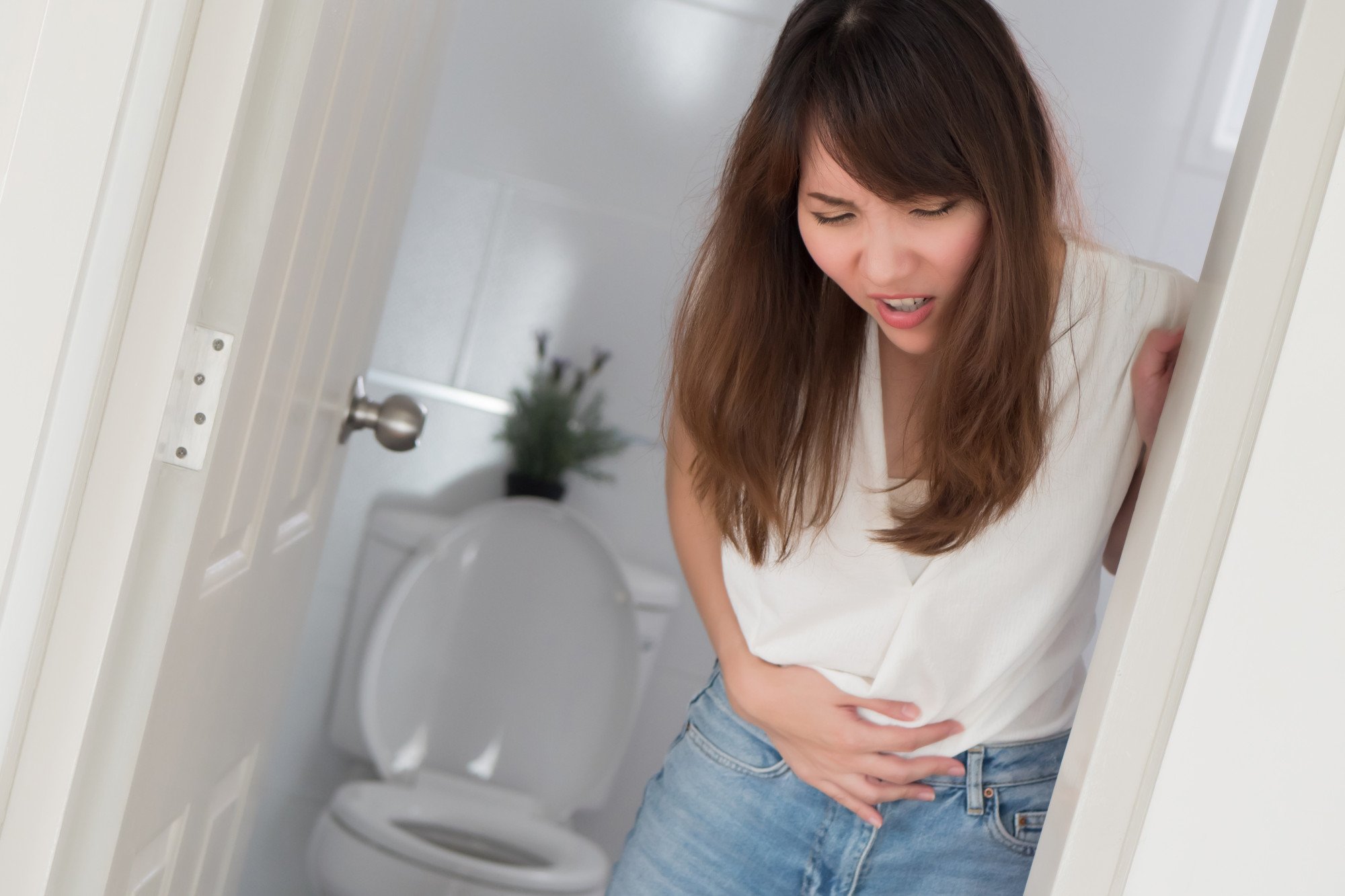
How to prevent or relieve constipation: its causes, remedies, and when it’s an emergency – expert advice on staying regular
- With December being constipation awareness month, we talk to doctors about how bad it really is for our systems and what can we do to avoid or ease it
- One go-to remedy? A spoon of flaxseeds or chia seeds with plenty of water first thing in the morning; prunes work well too
“The intoxication of the body with hazardous agents from faeces in the bowel” – that’s how The Ebers Papyrus, an Egyptian medical reference book of sorts, defined constipation back in 1550BC.
And thus it was – with the mistaken belief that waste that remained in the colon poisoned our systems – that our millennia-long obsession with regular bowel movements began.
Roughly 2,000 years later, King Henry VIII sat on the British throne. He was attended by a “Groom of the Stool” – a courtier who accompanied him everywhere to examine the outcome of his bowel movements.
He would advise the king on how to alleviate the chronic problem of constipation resulting from his lifestyle – too much red meat, too little physical activity. Four such “grooms” – all well-connected nobility – held the post during the king’s reign.

One even once resorted to assisting the king in bowel evacuation with an enema fashioned using a pig’s bladder. The courtier noted the exercise had been successful: his royal master was relieved by “a very fair siege”.
By the beginning of the 19th century, medics’ unanimous sentiment was that constipation was the most universal of all ills, and that daily evacuation of the bowels was vital for good health.
A slew of remedies to prompt a bowel movement – including rectal dilators – entered the market.
In the early 1900s, All Bran, a breakfast cereal, was introduced. It was too late to help Henry, but it has been on store shelves for far longer than his reign lasted.
You’ve got a sore throat. Do you take antibiotics? Why it can be a bad idea
Apart from being uncomfortable and leaving us with what medieval medics called “bowel bloat” – “a horrible, slimy monster that makes man’s life a misery” – how bad is constipation for our systems really? And what can we do to avoid or ease it?
Patients suffer from different types of constipation, says Dr Sandy Pang Hing-yan of The London Medical Clinic in Hong Kong.
“Patients can complain of stools that are hard and difficult to pass, infrequent bowel movements – less than three times a week – small-volume stools, the need to strain, or a sensation of incomplete evacuation.”

Essentially, constipation is the slowing down of the “evacuation of stool”, says nutritionist Sandra Carvajal at Central & Stanley Wellness in Hong Kong, and is mainly a consequence of lifestyle.
“Sedentariness, inadequate dietary fibre intake, insufficient liquids, lack of healthy fats in the diet, improper chewing, stress, travelling, change of routine or diet, delaying elimination – not going when you need to go – or certain medications” all play a role, Carvajal says.
On rare occasions, Carvajal continues, constipation is linked to illness, when the colon malfunctions and doesn’t help move things along.

Diseases of the nervous system, such as Parkinson’s or multiple sclerosis, and metabolic diseases like diabetes can all cause constipation.
Fibre plays a key role in preventing constipation. It absorbs excess water and supports weight, size and consistency of stool, making it easier to pass.
Soluble and insoluble fibre are both important. Insoluble fibre is better for constipation as it speeds up the passage of food. Good sources include vegetables, beans, flax and chia seeds. Soluble fibre – oats are a great source – absorbs water and slows down digestion.

When constipated, eat less soluble fibre and more insoluble fibre. Most fruit and vegetables are sources of both, which is why they help to keep digestion balanced.
When upping your fibre intake, make sure you drink enough, Carvajal says. “Otherwise it can cause the opposite effect as the stools become harder and lumpy.”
Chronic constipation is rarely life-threatening, Pang says, though it can cause abdominal discomfort and pain.
The slower movement of stool might increase the amount of bacteria in the gut, resulting in inflammation in the colon, Carvajal says, with the possibility of bowel disorders and related illnesses. Difficulties passing hard stools can cause haemorrhoids, which can be painful.
What is the ‘internal shower’ chia seed drink that’s gone viral on TikTok?
If constipation goes on for longer than usual, a person should see their doctor, Pang says, to check for obstruction, which can be life-threatening.
“Rarely, chronic constipation leads to an abnormal and life-threatening dilation of the colon called ‘megacolon’, which is also an emergency,” she adds.
You don’t have to defecate every day. The key is to know your own “normal”; for some people that’s three times a day, for others, three times a week.
And understand what constitutes a healthy bowel movement: complete evacuation of a stool that is soft, smooth and easy to pass.
“Twice round the pan and pointed at both ends” a doctor friend used to say. Carvajal delivers a more detailed description: “Stool should be like a sausage with some cracking texture, or smooth and soft. When too lumpy it indicates constipation; when too mushy it might indicate malabsorption disorders.”

In terms of colour, a healthy stool should be anywhere from brown to yellowish brown.
Colour can be determined by what we eat, but, Carvajal urges, particular attention must be given to black stools, which can be due to iron supplements but might indicate bleeding in the upper GI tract; or bright red, which can be caused by red foods, but might indicate bleeding in the lower GI tract.
“Both require attention and best to seek a doctor’s advice.”
Changes in bowel habits should always be reported to your doctor, Pang says, especially if you see blood.
How much flatulence per day is normal? And how to stop passing wind so much
Constipation is common. In the United States, about 16 out of every 100 adults suffer. The prevalence of constipation rises dramatically in people aged 65 and over, Pang says, and is more common in women.
In Hong Kong, “a consensus statement issued by several experts in 2019 estimates the prevalence of chronic … constipation to be 14 per cent”, Pang says. “I see this condition commonly, at least several times a week.”
Doctors agree that laxatives should be a last resort as allowing them to become a habit can set up a whole raft of problems.
Laxatives can create nutritional imbalances and impair the colon’s normal, healthy function, Carvajal says, adding that it is always better to try adding fibre, fluids and healthy fats first.

Her go-to natural remedy for constipation? “One spoon of flaxseeds with plenty of water first thing in the morning, and after three to five days you should start seeing results. For some people chia seeds work better. Add a spoonful to a glass of water, let it rest for 10 minutes, then drink.”
Prunes work well too as they are rich in insoluble fibre and contain a natural laxative, sorbitol.
So while constipation is not the root of all bodily evil as once thought, we can all learn from Henry VIII: move more, eat less red meat and more fibre, and drink enough water.
While you might not employ a Groom of the Stool, you might benefit from another kind of stool: a small footrest in front of the loo to slightly elevate your feet, which helps mimic the natural squat of old and aids the colon in a downward trajectory.

